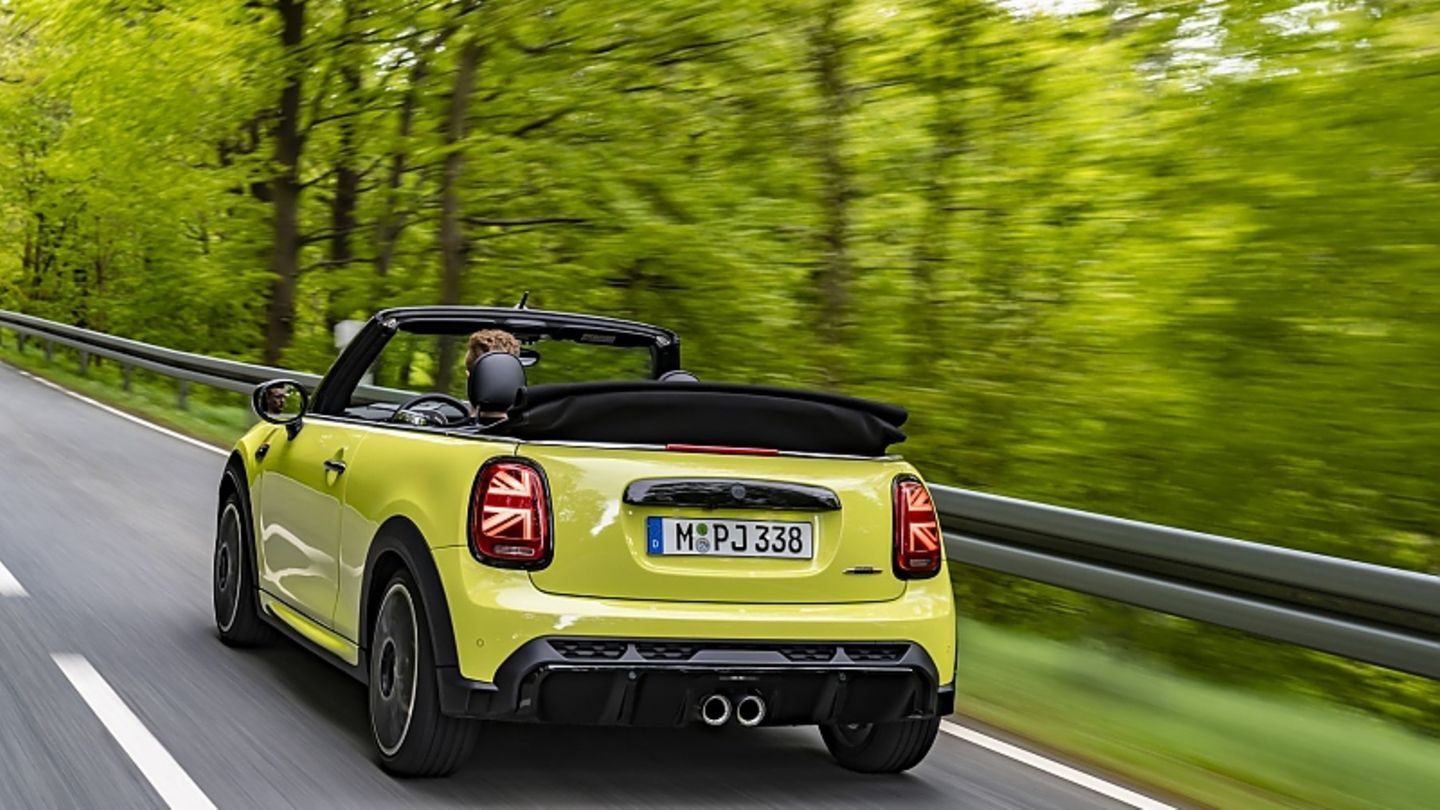Mini refreshes the John Cooper Works convertible. Outwardly, only details can be seen; the difference is made by a new chassis with frequency-selective dampers.
Sometimes press release writers are not to be envied. To describe an optically thin model refreshment too convincingly is like trying to squeeze a whole glass of juice from a squeezed orange. So in the Mini John Cooper Works Cabrio one reads about a “larger hexagonal radiator grille”, a “bumper strip painted in the color of the car”, a paint called “Zesty Yellow” only available for the open JCW and “modified side scuttles” on the front side walls and a redesigned rear apron. Ultimately, external detailed work that only experts notice. That’s okay too, a mini should also look “hip”. It’s not for nothing that lifestyle-conscious women like to climb into the little Britons.
Those who like to take things a little faster, then choose the John Cooper Works variant, which also has a sportier look than the standard minis. So that this is not only the case in terms of appearance, the engineers at the JCW have installed a new chassis with frequency-selective dampers. The first test drive will show how this works in everyday life. More on that in a moment. The weight is already conducive to the promise of agility. The convertible weighs only 1,375 kilograms without the driver, combined with the unchanged output of 170 kW / 231 PS, the basic arithmetic already shows that the topless Briton is making pretty quick progress. With a time of 6.5 seconds from zero to 100 km / h there is no need to hide, and the top speed of 150 km / h is fast enough. This Mini is not about a drag race, but about the slalom. After all, the mini marketing strategists never tire of drumming with the go-kart feeling. Especially since this is the version with the racing-related three letters, which per se commit to increased agility.
And the convertible also complies with this requirement. Compared to the brand brothers, the power variant always whizzes around corners a bit faster without annoying the driver with bitchy reactions. On the contrary, even with quick changes of direction, the Mini Cooper remains neutral for a long time and can be moved in a relaxed manner. Only if you overdo it with the cornering, the Mini gently pushes over the front wheels and can be caught again quickly by reducing the speed. However, we are missing the ultimate lightness one expects from a JCW version. The Mini JCW Cabrio is a sharp Japanese steak knife, but not a fine scalpel. The BMW UKL architecture cannot be completely touched up.
When it comes to comfort, however, the technology synergy pays off. On request, the Mini John Cooper Works Convertible can be fitted with frequency-selective dampers that react to uneven road surfaces within 50 to 100 milliseconds and cushion them. In this system, the oil flow, which defines the hardness of the damper, is regulated by an additional valve. As a result, the mini-technicians hope to increase the maximum damping force by up to ten percent. The trick has the desired effect. The topless Mini JCW is sporty and firm, but it evens out the unevenness of the road without appearing too synthetically soft. Especially when you are on the move quickly, you want to feel how the relationship between the chassis and the asphalt is developing. In the “Mid” driving mode, long distances can also be covered in a relatively relaxed manner. But if you are looking for a sedan chair, you are definitely in the wrong car.
If you choose a more sporty driving style, you shouldn’t be surprised that you beat the average consumption of 7.1 l / 100 km (WLTP cycle) specified by Mini. But the Brembo brakes tackle it courageously. The Mini JCW Cabrio is fun, whether in the city or on the country road. Especially when you open the roof, lower the windows and the wind can rage unhindered through the interior, you can really enjoy the powerful mini. Especially since the roof can be opened up to a speed of 30 kilometers per hour and disappears behind the driver within 18 seconds.
If you say mini, you have to put up with a certain playfulness in the interior, even with the strongest variant. So the ring around the circular central instrument changes color according to the selected driving mode. However, despite the somewhat smaller rotary push button, you can tell that the infotainment system is related to BMW, which is a positive thing and the combination of a small digital display that sits on the steering column and the head-up display keeps the driver up to date with all the important data. However, this fun has its price. If you choose the fast-acting eight-speed sports automatic transmission instead of the manual six-speed gearbox, you put at least 39,200 euros on the table.
I am a 24-year-old writer and journalist who has been working in the news industry for the past two years. I write primarily about market news, so if you’re looking for insights into what’s going on in the stock market or economic indicators, you’ve come to the right place. I also dabble in writing articles on lifestyle trends and pop culture news.




